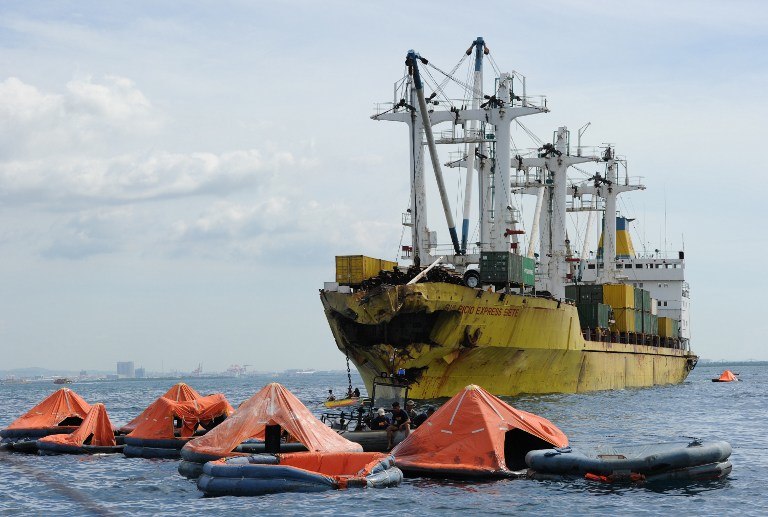SUMMARY
This is AI generated summarization, which may have errors. For context, always refer to the full article.

CEBU CITY, Philippines (UPDATED) – The number of people missing from the Cebu ferry disaster dropped from 170 to 85 Sunday, August 18, authorities said, with the lower figure due to tallying issues rather than new rescues.
The Philippine Coast Guard said that, as of 10 am local time, the death toll from the sunken St Thomas Aquinas ferry stood at 34, with 85 others missing, the coastguard said.
The number of missing was cut from 170 after all those involved in the search reconciled their figures, and not because of late rescues, said Neil Sanchez, regional disaster management office head in the central city of Cebu.
More than 700 people had been rescued, according to the coastguard.
Rescuers struggled in rough seas Sunday, August 18, as they resumed a bleak search for the missing in the country’s latest ferry disaster, but insisted miracle survivor stories were possible.
The ferry, carrying 830 passengers and crew, sank almost instantly on Friday night, August 16, following a collision with a cargo vessel outside a major port in the central city of Cebu.
Stormy weather forced an early suspension of search and rescue operations with a few hours of daylight remaining on Saturday, August 17, and similar conditions hampered the effort when rescuers returned to the waters at dawn on Sunday morning.
Navy spokesman Lt Commander Gregory Fabic said the weather had again prevented divers from reaching the sunken vessel, where many of those missing were believed trapped, but rescuers would make every effort to get there.
“It is possible that there are air pockets in its compartments and there might the survivors,” Fabic told Agence France-Presse, adding people could survive for 72 hours in such conditions.
“There is still hope that there might just be survivors there.”
READ: History of ferry disasters in the Philippines
Meanwhile, navy vessels, coastguard personnel on rubber boats and volunteer fishermen scoured about 3 square kilometers (1.8 square miles) of water outside the port for anyone who may still be floating.
Nevertheless, authorities cautioned that the odds of finding any more survivors were low.
“We are still hopeful, although you have to accept the reality that their chances of survival are very slim,” the head of the provincial disaster management office, Neil Sanchez, told reporters from rescue command centre at the port.
The ships collided as they were going in opposite directions at a well-known choke point near the mouth of Cebu’s port.
Authorities said the St Thomas Aquinas ferry sank within 10 minutes of the crash.
The cargo ship, Sulpicio Express 7, which had 36 crew members on board, did not sink. Its steel bow had caved in on impact but it sailed safely to dock.
READ: Ferry disaster is 5th tragedy for Sulpicio
One survivor, Lolita Gonzaga, 57, recalled the terror of falling from the top deck of the ship to the bottom level when the collision occurred, then the horror of escaping the black waters with her 62-year-old husband.
“When we were rescued we had to share the rubber boat with a dead woman. She was just lying there,” Gonzaga told AFP on Saturday from a hospital bed in Cebu where she was nursing spinal injuries.
The Maritime Industry Authority (Marina) said both vessels had passed safety checks and were sea worthy, indicating human error was to blame for one of the ships going into a wrong lane.
Ferries are one of the main forms of transport across the archipelago of more than 7,100 islands, particularly for the millions of people too poor to fly.
But sea accidents are common, with poor safety standards and lax enforcement typically to blame.
The world’s deadliest peacetime maritime disaster occurred near the capital Manila in 1987 when a ferry laden with Christmas vacationers collided with a small oil tanker, killing more than 4,300 people.
In 2008, a huge ferry capsized during a typhoon off the central island of Sibuyan, leaving almost 800 dead. – Rappler.com
Add a comment
How does this make you feel?
There are no comments yet. Add your comment to start the conversation.